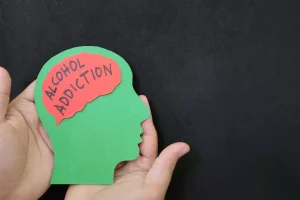
Women are more likely than men to suffer alcohol-induced brain damage, such as loss of mental function and reduced brain size. In the DSM-5, alcohol use disorder is further classified into categories of mild, moderate, and severe. Other early signs of alcoholism include blackout drinking or a drastic change in demeanor while drinking, such as consistently becoming physical characteristics of alcoholics angry or violent. Ultimately, the risk-vs-enjoyment calculus of consuming alcohol should be considered on an individual basis, based on your current health status, your medication use, and other factors, experts say. “I don’t think alcohol is evil by any means but it’s a riskier proposition as you get older—you have to be more cautious,” says Moore.
Drugs & Supplements
Heavy drinking over a period of time can cause a physical dependence on alcohol. If you suddenly stop drinking, your body will often experience withdrawal. Withdrawal symptoms include sweating, shaking, nausea, and anxiety. If you drink heavily for a long time, alcohol can affect how your brain looks and works.
- For some people, a personal life crisis, like the death of a loved one, a job loss, breakup or divorce can put you on the path from alcohol abuse to full-blown alcoholism.
- Having support and seeking professional treatment increases the chances for recovery from AUD.
- “I don’t think alcohol is evil by any means but it’s a riskier proposition as you get older—you have to be more cautious,” says Moore.
- Maybe you’ve been concerned enough that you’ve already thought about or actually tried to cut down on your drinking — and it didn’t happen.
Long-Term Effects of Alcohol on the Body
People with AUD represent about 20–35 percent of completed suicides. People with alcohol use disorder or those who come to the ER intoxicated face higher odds of death within a year than the general population. Wernicke-Korsakoff syndrome is a degenerative brain disorder that causes mental confusion, vision problems, lack of coordination, and memory problems, among other symptoms. https://ecosoberhouse.com/article/diabetes-and-alcohol-can-diabetics-get-drunk/ Adolescents are also likely to binge drink, which can lead to serious consequences, including injury and death. As mentioned above, the DSM-5 says an AUD diagnosis requires at least 2 of the 11 symptoms of alcoholism listed above to have occurred within the previous 12 months. With these conditions, you’ll only notice symptoms during alcohol intoxication or withdrawal.

Short-Term & Long-Term Effects of Alcohol on the Brain
AUD in women often leads to inflammation of the liver, which is also known as alcoholic hepatitis. Women who struggle with alcohol use disorder are also more likely to die from cirrhosis than men in the same situation. When estrogen and alcohol are combined, it causes a greater risk of liver damage. Physical signs of liver damage include yellow skin and eyes (jaundice) and swollen legs and ankles. Other possible symptoms are dark urine, abdominal pain, itchy skin, and chronic fatigue. Much like with other drugs, it’s easy to develop a tolerance to alcohol.
- Changes in hormone levels during the menstrual cycle may also affect how a woman metabolizes alcohol.
- In fact, about half of all cases of alcoholism in women begin after age 59.
- Because alcohol affects your sleep, you may also notice under-eye circles the day after drinking (10).
- If they don’t, they may feel empty, anxious, depressed, hollow, or down.
- It also can impact judgment, reaction time, and driving ability.
- Your stomach wants to get rid of the toxins and acid that alcohol churns up, which gives you nausea and vomiting.
- There are an estimated 15 million individuals living with alcohol use disorder (AUD) in the U.S.

The reality is that these physical symptoms are not symptoms of a hangover. They are actually symptoms of having a physical dependence on alcohol. While sleeping, the body metabolizes alcohol, which causes withdrawal symptoms upon waking up.
- As mentioned above, the DSM-5 says an AUD diagnosis requires at least 2 of the 11 symptoms of alcoholism listed above to have occurred within the previous 12 months.
- Alcohol abuse differs from alcoholism in that people who abuse alcohol can usually set limits for their drinking.
- We use only trustworthy sources, including peer-reviewed studies, board-certified medical experts, patients with lived experience, and information from top institutions.

The Steps to Liver Disease


Add Comment